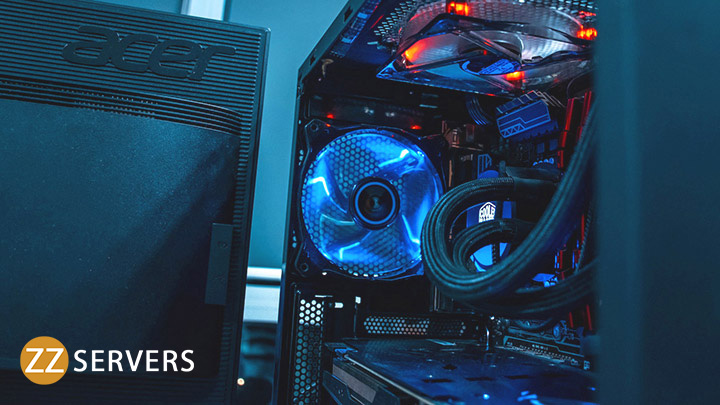Welcome to the Software-Defined Data Centers (SDDC) world, where control over every aspect of your data center infrastructure is at your fingertips.
Imagine a symphony of virtualized resources orchestrated precisely to optimize performance and efficiency. In this article, we will dive into the depths of SDDC, exploring its key components, the benefits it brings, and the challenges it poses.
Understanding Software-Defined Data Centers
Understanding a software-defined data center’s concept is essential for IT professionals seeking to optimize resource utilization and streamline management processes.
A software-defined data center (SDDC) extends the principles of server virtualization to all data center resources and services, including networking, storage, CPU, and security. It provides a single software toolset to manage these virtualized resources, allowing for centralized control and automation.
By abstracting the infrastructure from physical hardware, SDDC enables organizations to pool and allocate resources more efficiently. This means that IT professionals can allocate computing, storage, and networking resources as needed without being constrained by physical hardware limitations. Virtualization plays a crucial role in this process, as it allows for creating virtual instances of hardware components, such as virtual servers, virtual storage, and virtual networks.
One of the key benefits of SDDC is the ability to automate provisioning and management tasks through policy-driven processes. This automation speeds up the delivery of resources and enhances efficiency, as IT professionals can define policies that dictate how resources are allocated and managed. This reduces the manual effort required for tasks such as provisioning new servers or adjusting network configurations.
Key Components of SDDC
A crucial aspect of SDDC is the integration of key components that enable the virtualization and management of data center resources. These core components include:
- Server Virtualization: abstracts operating systems and applications from physical servers, allowing multiple virtual machines to run on a single server.
- Network Virtualization: provisions and manages networks independently of physical hardware, improving flexibility and decreasing provisioning time. It also enhances security capabilities and workload isolation.
- Storage Virtualization: pools storage resources, eliminating disconnected storage systems. It improves flexibility and scalability, allowing dynamic allocation of storage capacity on demand.
When integrated into the SDDC architecture, these components create a virtual data center that combines computing, storage, and networking resources. This standardized platform enables efficient management and delivery of IT resources as a service.

Benefits of Implementing SDDC
Implementing an SDDC architecture offers organizations numerous advantages, including streamlined resource allocation and enhanced operational efficiency. One of the key benefits of implementing SDDC is the ability to virtualize resources within the data center. This allows for greater flexibility and agility in managing and allocating resources and the ability to scale up or down as needed.
Automation is another significant advantage of SDDC, as it enables organizations to automate routine tasks and processes, reducing manual efforts and increasing efficiency.
By adopting an SDDC approach, organizations can also improve infrastructure management. With a centralized management platform, IT teams can easily monitor and control the entire data center infrastructure, improving visibility and control. This simplifies infrastructure management and allows for better resource utilization and optimization.
SDDC paves the way for hybrid cloud and cloud computing adoption. By abstracting the underlying hardware, SDDC enables organizations to seamlessly integrate and manage both on-premises and cloud-based resources. This provides the flexibility to leverage the benefits of the cloud while maintaining control over sensitive data and applications.
Challenges in Adopting Software-Defined Data Center
Adopting a software-defined data center challenges standardizing processes and aligning cross-functional teams. These challenges can include:
- Siloed Processes: Traditional IT organizations often have siloed processes and policies that make standardization difficult. It can be time-consuming to gain cross-functional agreements and align teams such as procurement, development, IT analysts, and system administrators.
- Technical Challenges: Switching to a new SDDC environment can result in application downtime. Planning the implementation in phases and using a cloud-based SDDC can help minimize the risk of downtime. Virtualizing new infrastructure layers, such as storage and networking, may require the operations team to adapt their existing processes and workflows.
- Learning Curve: Administrators may face a learning curve as they prepare to manage the new SDDC environment and use new tools. Adopting a cloud-based SDDC that employs familiar tools can help reduce this learning curve.
Overcoming these challenges is crucial to fully realizing the benefits of SDDC, such as increased efficiency, innovation, and cost savings. By standardizing processes, addressing technical challenges, and providing appropriate training and support, organizations can successfully adopt and manage software-defined data centers, enabling improved service delivery and the integration of hybrid clouds.
Effective operations management is key to ensuring the smooth transition and ongoing optimization of the SDDC environment.
Contact ZZ Servers Today for Software Defined Data Center
To explore the benefits of a Software Defined Data Center (SDDC), consider contacting ZZ Servers for expert guidance and implementation support. ZZ Servers, a trusted cybersecurity services provider with over 17 years of experience, can help you navigate the complexities of implementing an SDDC. With our extensive knowledge and expertise in the Information Technology and Cybersecurity sector, ZZ Servers is well-equipped to assist organizations of all sizes.
Implementing an SDDC can bring significant advantages, such as enhanced flexibility, scalability, and agility in managing your data center infrastructure. ZZ Servers can guide you through the process, ensuring that your SDDC implementation aligns with your business goals and objectives.
Don’t hesitate to contact ZZ Servers today to learn more about how we can help you harness the power of a software-defined data center. With our expertise, you can make informed decisions and maximize the benefits of an SDDC for your organization.

Conclusion
In conclusion, software-defined data centers (SDDC) offer numerous benefits, such as increased flexibility, scalability, and cost savings.
However, adopting SDDC also poses challenges, including the need for specialized skills and potential security risks.
Despite these challenges, the global SDDC market is expected to grow at a CAGR of 25.7% from 2020 to 2027, reaching a market value of $131.7 billion.
This statistic highlights the increasing popularity and importance of SDDC in the digital transformation era.
Frequently Asked Questions
u003cstrongu003eWhat Are the Various Software-Defined Components of a Software-Defined Data Center (SDDC)?u003c/strongu003e
The software-defined software-defined data center (SDDC) components include network virtualization, storage virtualization, and server virtualization. These components enable the abstraction and automation of infrastructure resources, increasing flexibility and scalability.
u003cstrongu003eHow Does the Implementation of SDDC Impact the Overall Security of the Data Center?u003c/strongu003e
The implementation of SDDC significantly impacts the overall u003ca title=u0022What Is Data Center Security? A Comprehensive Guideu0022 href=u0022https://www.zzservers.com/what-is-data-center-security/u0022u003esecurity of a data centeru003c/au003e. Leveraging software-defined components allows for centralized management and enforcement of security policies, leading to enhanced protection against u003ca title=u0022Cyber Threat Intelligence: How It Can Help Identify and Mitigate Cybersecurity Risksu0022 href=u0022https://www.zzservers.com/cyber-threat-intelligence-how-it-can-help-identify-and-mitigate-cybersecurity-risks/u0022u003ecyber threatsu003c/au003e and improved data integrity.
u003cstrongu003eWhat Are the Key Differences Between a Traditional Data Center and a Software-Defined Data Center?u003c/strongu003e
Key differences between a traditional and a software-defined data center include increased agility, flexibility, and automation in managing infrastructure. This enables organizations to respond quickly to changing business needs and achieve notable benefits, such as improved scalability and cost savings.
u003cstrongu003eHow Does the Adoption of SDDC Affect the Scalability and Flexibility of an Organization’s IT Infrastructure?u003c/strongu003e
The adoption of SDDC greatly enhances the scalability and flexibility of an organization’s IT infrastructure by enabling the dynamic provisioning and management of resources through software, reducing manual intervention, and allowing for rapid response to changing business needs.



